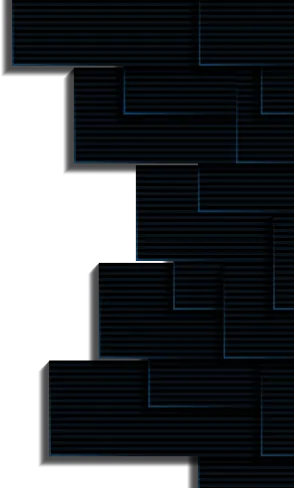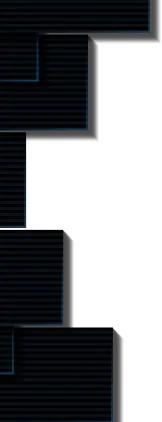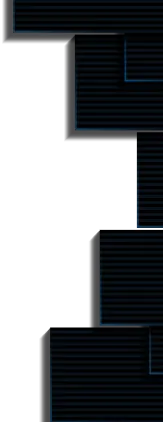Down the Rabbit Hole: MakerDAO, The Growing Decentralized Credit Platform!
Author: Siddharth

MakerDAO is an Ethereum-based decentralized credit platform supporting Dai, a USD-pegged stable coin. Maker lets anyone create a Vault, deposit ETH / USDC / BAT as collateral, and then get to produce Dai as debt for that collateral. A stability fee (i.e., continually collecting interest) is charged on Dai debt and is paid upon return of the borrowed Dai. That MKR, as well as the repaid Dai, is then destroyed.
Instead of a precious diamond ring or any other precious physical asset, the borrower in MakerDAO pawns a crypto asset and receives a loan in terms of DAI, a stable-priced cryptocurrency. Instead of a physical location, the pawned crypto asset is kept via a smart contract known as a Collateralized Debt Position, or CDP, which the borrower can only repay.
As a result, the MakerDAO system promises to enable anyone to receive loans without the need for KYC or trusted parties, at a desirable interest rate, with payback conditions left to the borrower's discretion, all while ensuring perfect security thanks to smart-contract management.
MakerDAO ecosystem: Current Status
The Maker ecosystem is among the first projects in the decentralized finance (DeFi) space, which aims to create decentralized financial products based on blockchains like Ethereum, enabled by smart-contract.
Today's price of Maker (MKR) stands at 2,279.74 USD, with $73,493,423 USD in trading volume for 24 hours. Within the last 24 hours, Maker has gained 0.5% of its value. There are 991,328 MKR coins in circulation, with a maximum supply of 1,005,577 MKR coins.
If you're looking for a place to buy Maker, the best exchanges right now are Binance, Huobi Global, Mandala Exchange, FTX, and OKEx.
DAI savings rate is 0.01%, and there are more than 6 million DAI with more than 7 million DAI debt ceiling currently. The system surplus for DAI stands at 54K+ holdings. There is more than 11 million USD worth DAI total locked in collateralization and its collateral ratio is 184.65%.
More than 400 services and apps are integrated with DAI, including:
- DeFi: InstaDapp, Uniswap, REN, Curve, etc.
- Wallet: Coinbase, Bitcointrade, Ledger, Metamask, etc.
- Games: League of Kingdoms, Sandbox, Xaya, F1 Delta Time, etc.
- Others: Museum of Contemporary digital Art, Foundation, OpenSea, Wirex, etc.
The Journey of MakerDAO:
- A Danish Entrepreneur named Rune Christensen founded MakerDAO in 2014.
- Dai and its accompanying smart contracts were formally published on the leading network of Ethereum on December 18, 2017. Even though the price of Ether fell by 80%+ during the same period, the cost of Dai was successfully kept near to one US dollar during its first year of existence. It was because Ether was the only collateral available at the time.
- Andreessen Horowitz, a venture capital firm, contributed $15 million to MakerDAO in September 2018, purchasing 6% of all MKR tokens.
- In 2018, MakerDAO further established the Maker Foundation, based in Copenhagen. It helps to bootstrap the ecosystem by, for example, building programming required for the platform to function and evolve.
- MakerDAO had internal debates in 2019 on the fact that it should be integrating more with the traditional finance system or not. Christensen desired more regulatory compliance so that assets other than cryptocurrencies may be used as collateral for Dai. Due to this growing conflict, MakerDAO's CTO resigned.
- Dai faced a deflationary deleveraging spiral in March 2020 due to unusual market volatility at the commencement of the COVID-19 pandemic, causing it to trade for a maximum of 1.1 USD before returning to its intended 1.00 USD valuation.
Brief Overview:
The collateralization ratio for Ether is now set at 150%, meaning that depositing 150 USD in Ether entitles you to a loan of a maximum of 100 Dai (approximately 100 USD). If the collateral value falls below this threshold, the smart contracts can immediately liquidate the loan. On the other side, if the value of Dai rises, more Dai can be borrowed. Vaults falling below that rate face a 13 percent penalty and the possibility of liquidation (by anyone) to get it out of debt. Liquidated collateral then gets sold at a 3 percent discount in the open market.
Holders of MKR, the other token of Maker, help run the system by voting on risk parameters, including the size of the stability fee. In the instance of a black swan event, MKR holders are also the last line of defense. MKR is developed and sold in the open market for generating more collateral if the system-wide collateral value goes too low too quickly, diluting MKR holders.
MakerDAO may limit the amount of Dai in circulation and consequently its value by managing the types of approved collateral, collateralization ratios, and interest rates for borrowing or storing Dai. The MKR token can be used for investments in the MakerDAO platform too. Apart from the loan's principal, Borrowers' extra interest is used to purchase and burn MKR tokens in the market. The goal of this technique is to make MKR deflationary in proportion to lending Dai revenues. The Dai Savings Rate (DSR) is another feature in Maker. Maker's DSR contract allows DAI holders to lock their DAI and then earn varying interest rates in DAI, earned via stability fees.
What Could Possibly Go Wrong?
The DAI stablecoin's value must be guaranteed to remain constant because the collateral's worth at least equals the borrowed amount. Therefore, even though the project's owners want to incorporate other crypto assets in the future, only ETH can now be used as collateral.
Because ETH is inherently volatile, the escrowed value rises in lockstep with the price of Ethereum.On the other side, if Ethereum's price falls, the collateral's value may fall below the loan amount. Then the borrower might also be enticed to default on his loan, decreasing all collateralized assets' values to the point where the entire system would collapse.
MakerDAO is a Stability Source
MakerDAO is used by several ecosystem actors, such as Aragon, to administer their projects. Aragon has chosen not to sell its ETH holdings at low prices to finance its operations costs as a project heavily related to the development of Ethereum but also strongly influenced by the declining values of the ETH in 2018. As a result, the project management established a CDP with substantial reserves that generate the DAI required for their expenditures.
While this option carries some risk in the event of a dramatic drop in the price of Ethereum, it provides a method for the project to endure the long months or years of a bear market without depleting its long-term reserves. Furthermore, in the medium run, if a bull market emerges, Aragon will be able to repurchase its debt for a significantly lower amount of ETH.
All of these players have various requirements and goals, as well as a somewhat speculative image. However, their competing needs help to keep the system in check, allowing DAI to be used as an essentially non-speculative commodity, a dependable account unit, a decentralized means of trade, and a store of wealth.
A currency is a term used to describe this type of asset!
MakerDAO is Going Completely Decentralized!
The DAO is now entirely self-sufficient. The Maker Foundation has fulfilled its bootstrapping tasks, with many Core Units approved by governance to efficiently coordinate all areas of labor within the DAO and the worldwide community now responsible for every part of the Maker Protocol. Within the following few months, the Foundation will formally dissolve.
Six years back, Dai's first iteration started, called eDollar, to ensure that people may utilize it on Ethereum to interact with dapps without worrying about volatility. As of now, more than 6 billion Dai is in circulation, with more than 8 billion USD worth of assets locked in the Maker protocol's smart contracts.
The Maker has progressed rapidly in a short period. It's gone from being a DAO to Foundation having bootstrapping tasks, and then to a DAO again. The Maker Protocol Foundation played a significant part in creating the Maker Protocol and the formation of a global workforce, although it was only meant to be temporary. It was built to achieve an unprecedented goal: a self-governing, self-operating DAO.
The global Maker community embraced its governance responsibilities as each technological and philosophical milestone was sketched out over time by the first DAO members and then by Foundation staff. People worldwide gathered to debate the implications and viability of every module, concept, UX, and other proposal. With each Executive Vote cast, another clear step toward complete decentralization was taken.
Check MakerDAO Ecosystem analytics 👇






Subscribe to receive Alpha!
Join 4.3k subscribers from renowned companies worldwide and get a weekly update in your inbox. Stay updated on the latest and finest projects and product updates.

